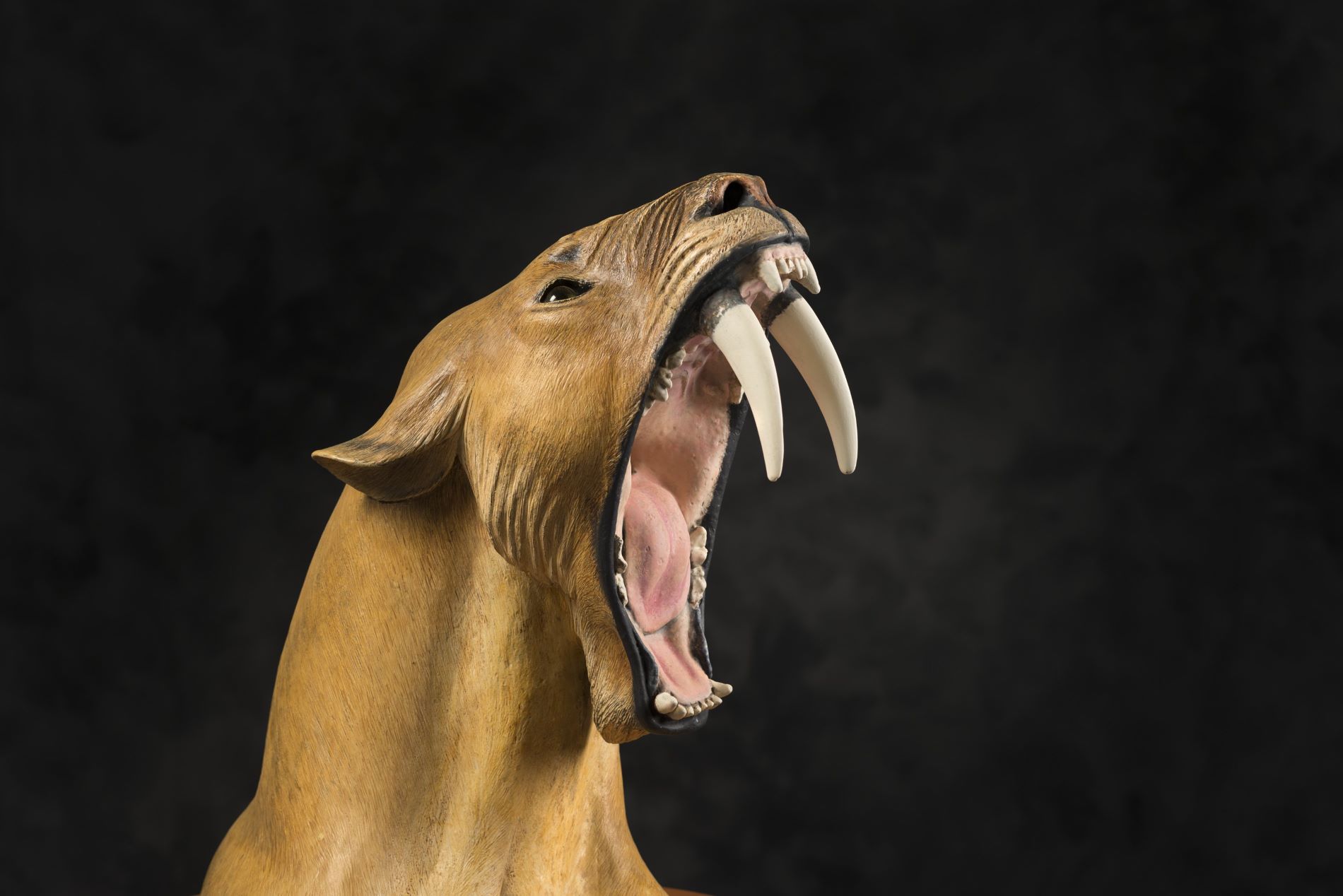
Catching a glimpse of an apex predator in the wild can be a rare and often dangerous prospect. These top-tier hunters are elusive creatures, roaming vast territories far from human civilization. Fortunately, the Denver Museum of Nature & Science offers an easier alternative to appreciate and better understand these magnificent creatures from up close.
Here, you can admire their power and beauty without having to travel to the far corners of the world. From life-like dioramas to prehistoric fossils and special exhibitions, visitors can encounter some of nature's most formidable hunters past and present.
Read on for a list of seven amazing apex predators you can discover and where to find them at the Denver Museum of Nature & Science:
T. Rex: Tyrant King of the Dinosaurs
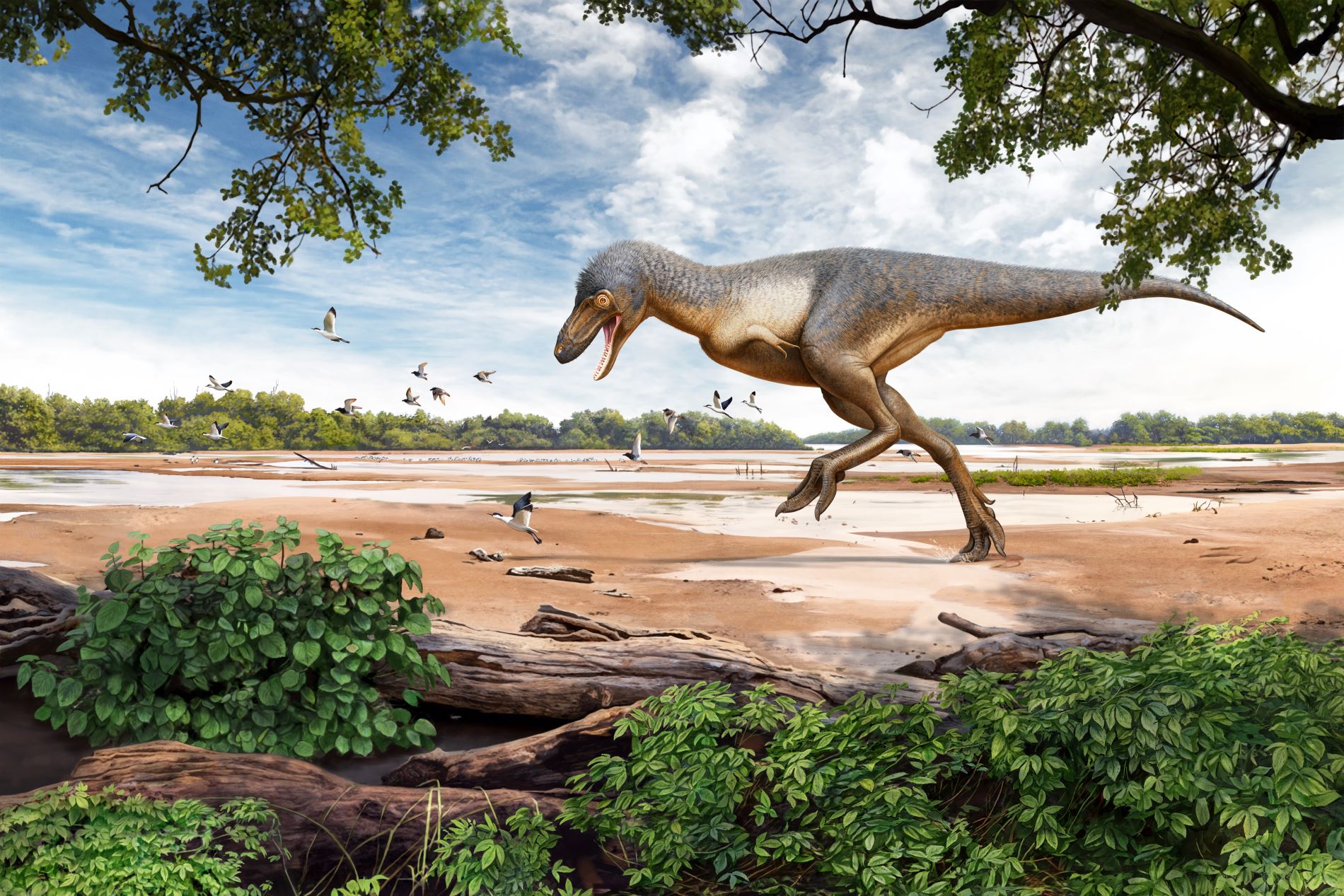
A reconstructed juvenile Tyrannosaurus rex traverses land in North Dakota some 67 million years ago. (Photo/ Andrey Atuchin and Denver Museum of Nature & Science)
Even though we're proud there's such a vast world to discover from across the ages at our Museum, there's a reason our guest often call us the "Dinosaur Museum." This is a great place to see dinosaurs, especially the tyrant king, top predator of dinosaur kingdom — Tyrannosaurus Rex!
Yes, when you enter into the Museum, you're sure to remember the iconic "dancing" T. rex, but that's definitely not the only chance you have to get a close look at this fierce predator from the Cretaceous Period. Right now, in the giant screen Infinity Theater we have “T. REX” the movie playing. With state-of-the-art CGI and cutting-edge paleontological insights, this movie offers an unprecedented journey into the world of the T. rex and its fellow Cretaceous carnivores.
Afterwards, go back downstairs to experience the temporary “Discovering Teen Rex” exhibition to learn about the extremely rare T. rex fossil and its amazing discovery by three kids in North Dakota featured in the movie. In this exhibition space, you will experience history in the making as our team of renowned paleontologists clean, preserve and study this rare adolescent T. rex fossil before the public on the Museum floor. Get an up-close look at this remarkable specimen and learn what it reveals about the growth and development of these fearsome apex predators.
Read more: Teen Rex Discovery Roars into the Denver Museum of Nature & Science
Crocodiles: Ancient Reptile Killers
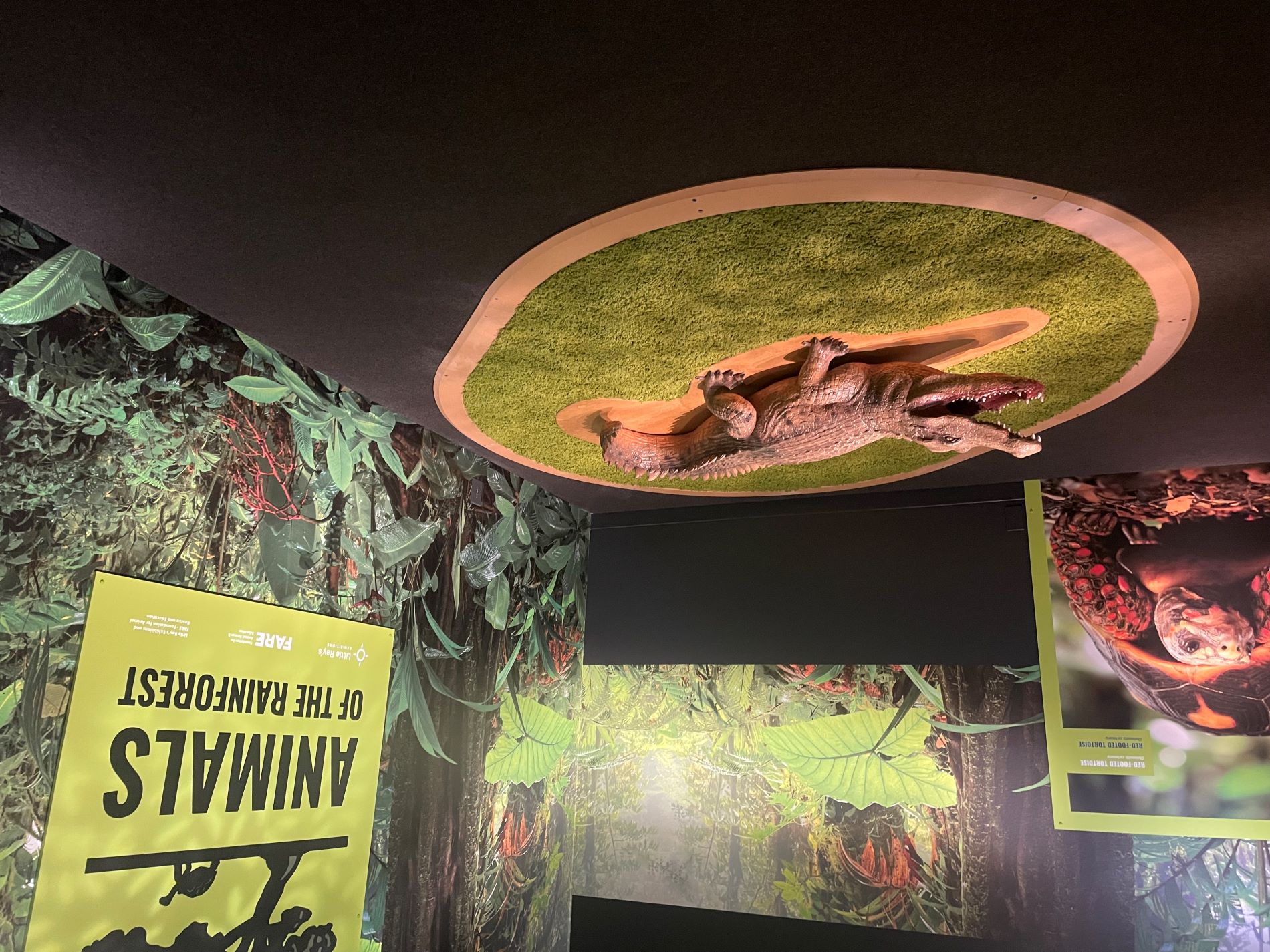
Temporary exhibition "Animals of the Rainforest" brings you up close with incredible living animals from the world's tropical regions. While there aren't any living apex predators in the exhibition, guests can take photos and play on a crocodile sculpture. (Photo/ Royal BC Museum)
Crocodiles are one of the world's oldest living apex predators with a range of adaptations that have allowed them to thrive for millions of years. Masters of camouflage and patience, crocodiles can stay still for hours as they wait for the perfect moment to strike their prey. Known for a terrifying tactic the "death roll," crocodiles will spin with their prey at incredible speeds before they get to eating.
In the Museum's temporary exhibition "Animals of the Rainforest," you'll encounter fascinating live animals, from sloths to reptiles and amphibians. Witness expert animal care demonstrations, learn about conservation efforts and get up close with these extraordinary creatures. For families, there's plenty to explore. Climb on life-sized animal replicas, including fierce predators like the crocodile, and have fun and memorable moments for family and friends to enjoy together. Don't miss this unique opportunity to experience the rainforest's biodiversity and have a blast doing it!
Gray Wolves: Cooperative Carnivores
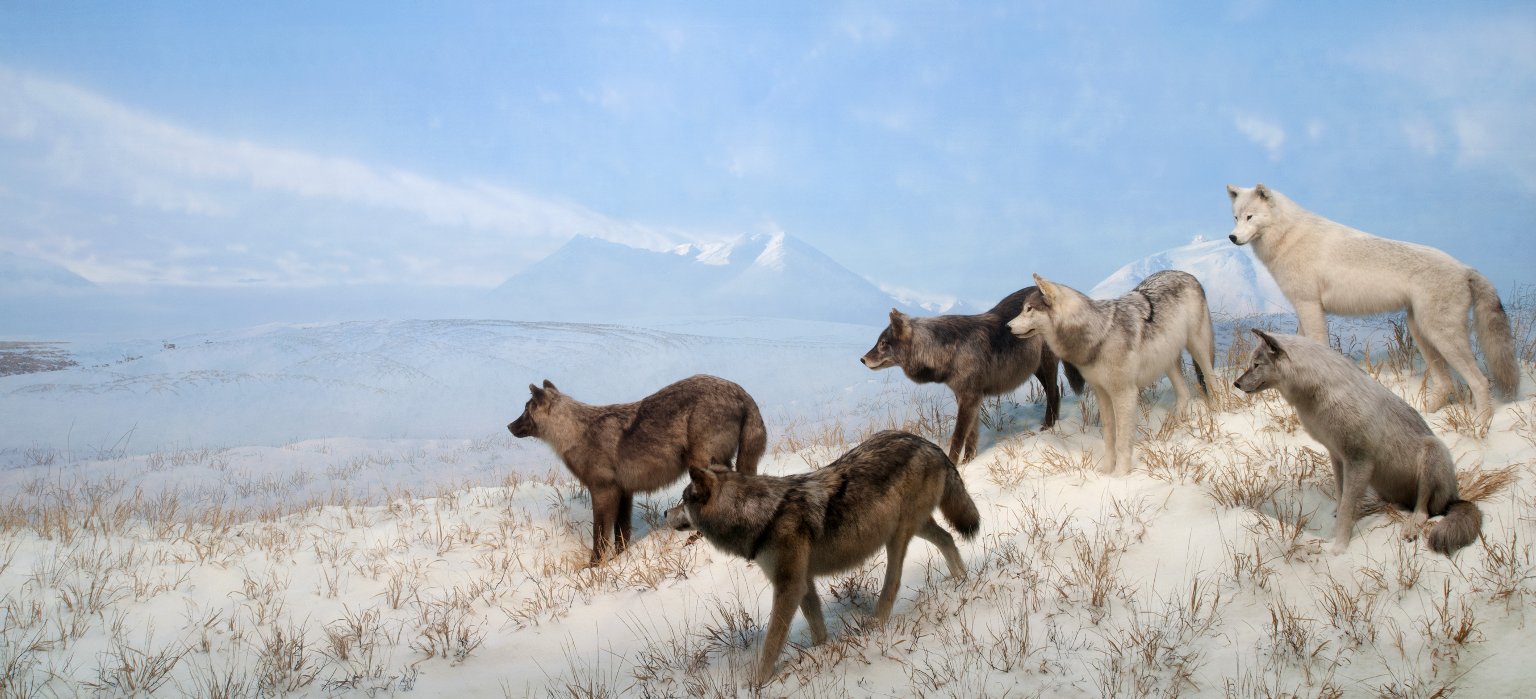
The Gray Wolf diorama depicts three male and two female Alaskan Grey Wolves in Anatuyuk Pass, north of Brooks Range, Alaska. The diorama can be found on in the North American Wildlife Hall on the Museum's second floor. (Photo/ Rick Wicker)
Roaming the the North American Wildlife Halls on the second floor, you'll encounter the gray wolf in a diorama setting that recreates its natural habitat. These intelligent pack hunters once dominated much of North America, including Colorado, and were the main predators of large mammals on the continent. The Museum's diorama highlights their complex social relationships, highlighting how these adaptable predators work together to take down prey much larger than themselves.
Mountain Lions: Silent Stalkers
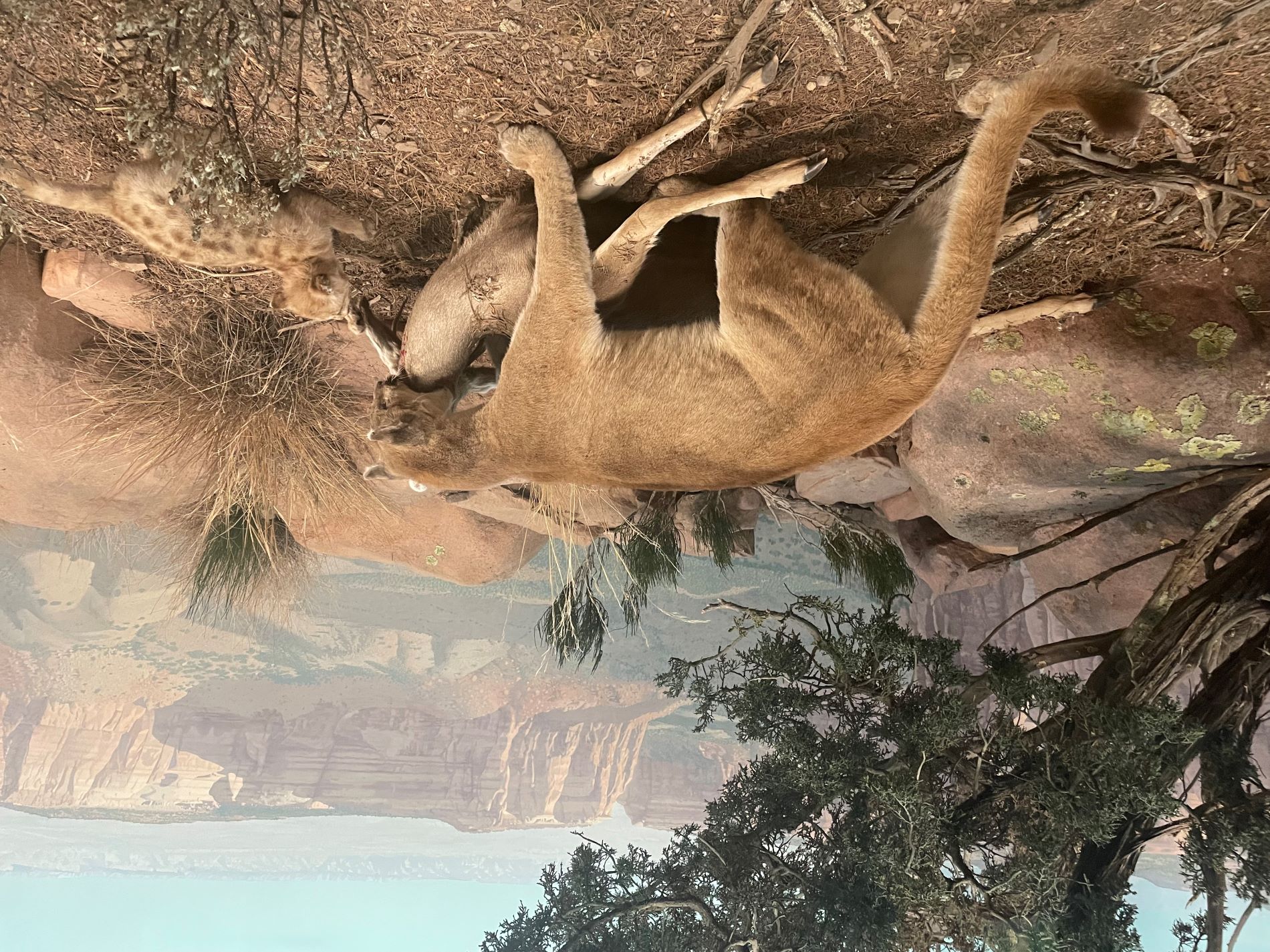
The mountain lion diorama depicts a female and two kits in Colorado National Monument, Grand Junction, Colo. (Photo/ Taran Volckhausen)
In the Edge of the Wild Hall, you'll find perhaps the cuddliest looking apex predators. Against a beautiful desert canyon backdrop, the mountain diorama portrays a mama mountain lion providing food for her adorable litter of cubs. Also known as cougars or pumas, mountain lions are the silent stalkers of the Americas. Just looking at the diorama, it's not hard to imagine how their powerful build would allow them to achieve explosive bursts of speed and makes incredible leaps when hunting their prey.
Polar Bears: Largest Land Meat Eaters
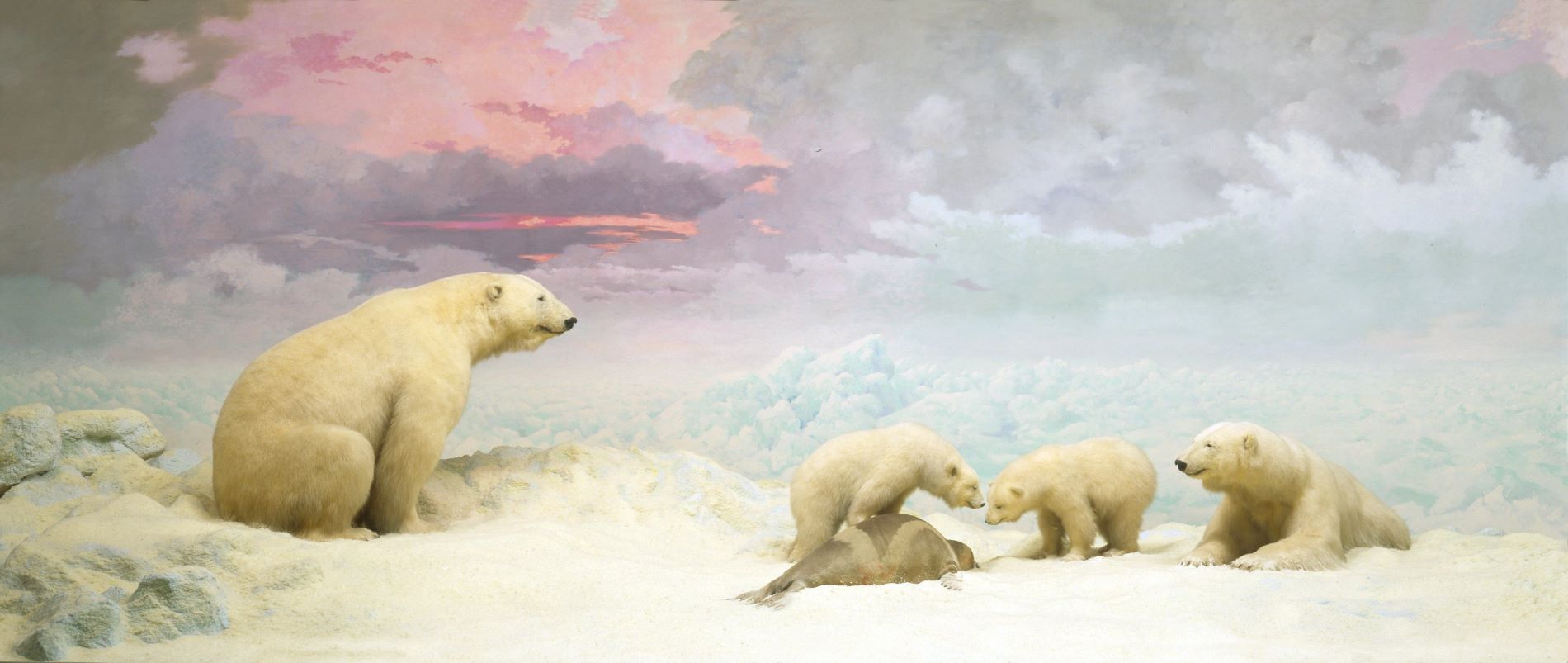
The polar bear diorama depicts female polar bear with cubs with a ribbon seal on ice pack near Wainwright, Alaska. (Photo/ Rick Wicker)
Walk into the Bears and Sea Mammals wing of the Wildlife Halls to come face-to-face with the world's largest land carnivore. The polar bear diorama showcases these majestic creatures in their icy domain. Learn about their incredible adaptations, from their thick blubber layer to their water-repellent fur, which allows them to survive in one of the harshest environments on Earth. Polar bears are becoming even harder to see in the wild as their habitat is shrinking due to climate change. That's why it's so important we appreciate and care about them all the more!
Lions: Masters of the African Savanna
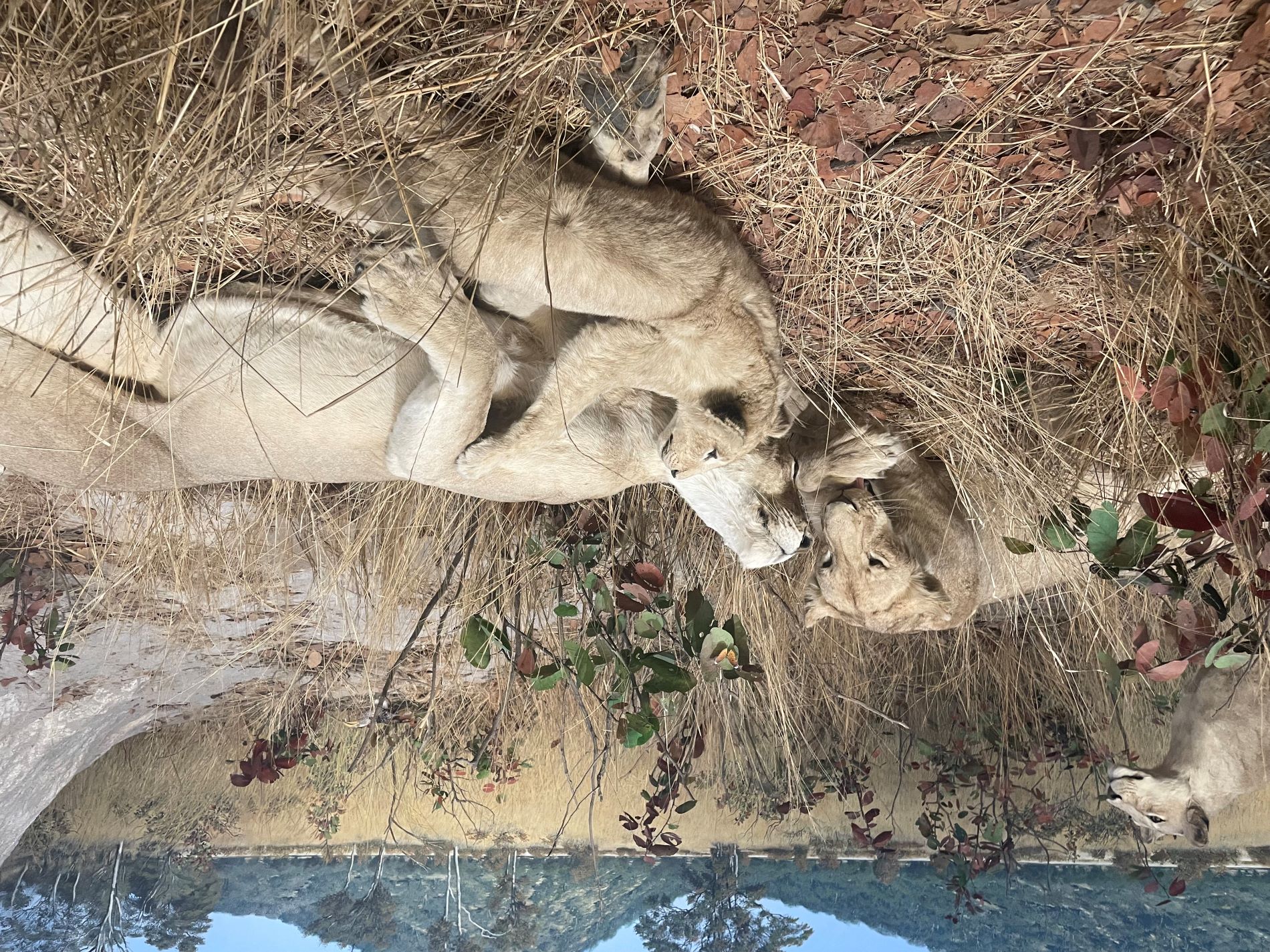
A pride of lions depicted in a diorama in the Botswana Hall on the third floor. (Photo/ Taran Volckhausen)
In the Botswana, Africa diorama hall on the third floor, you can see the kings of the savanna. Observe the social structure of a pride and learn about the distinct roles of males and females. The exhibit highlights their cooperative hunting techniques and the vital part they play in maintaining the delicate balance of their ecosystem.
Bald Eagle: Airborn Apex Predator
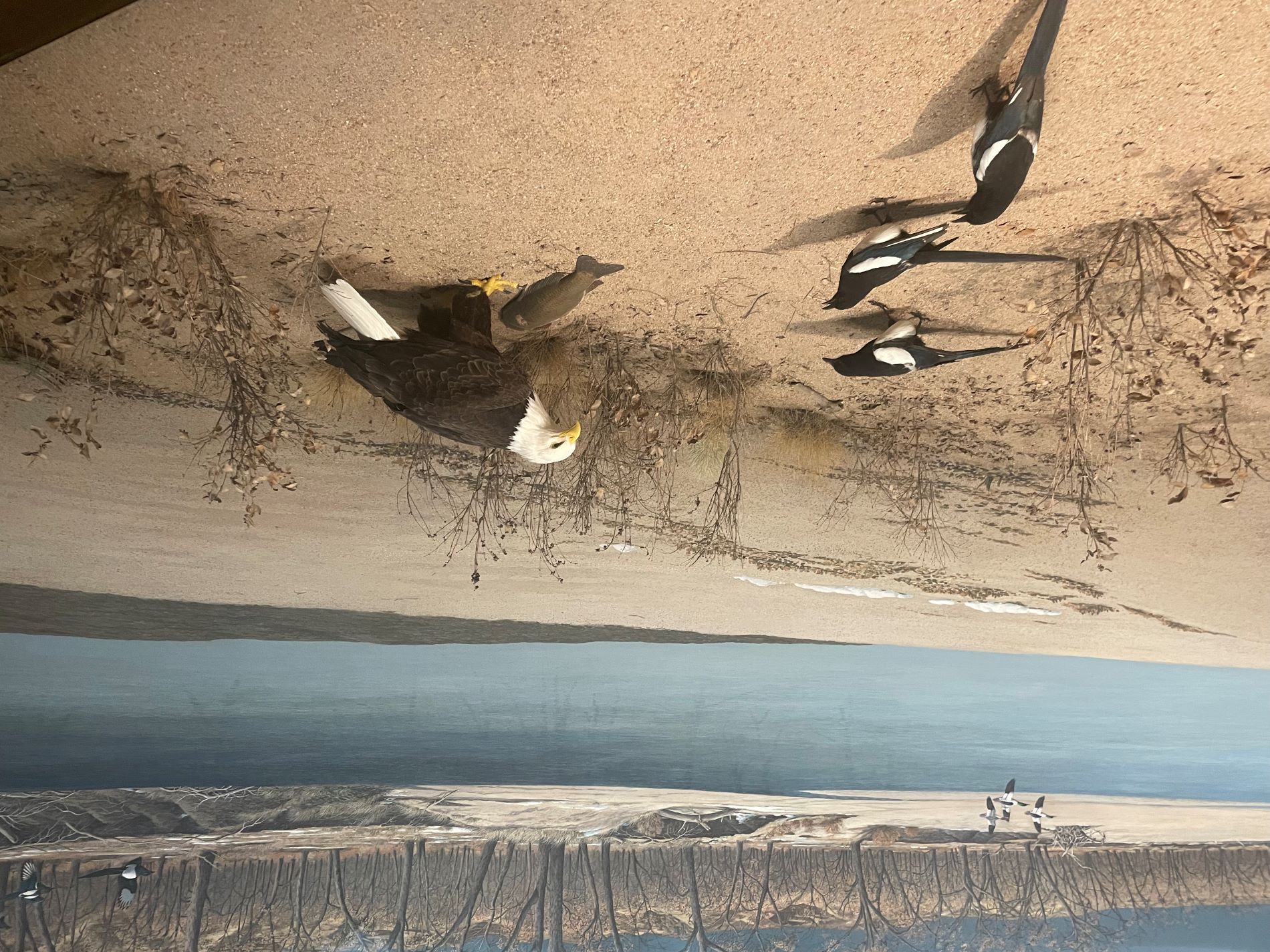
The diorama depicts a bald eagle surrounded by magpies along the South Platte River, Morgan County, Colo. (Photo/ Taran Volckhausen)
In the Birds of the Americas diorama hall, discover the rulers of the skies and the symbol of the United States of America—the bald eagle. While they may not have any natural predators, the diorama shows that pesky magpies sometimes will give bald eagles a hard time as they try to steal a bite off the eagle's kill.
Read more: Things to Do in Denver: Friday Nights at the Museum
From the ancient past to the present day, from land to sea to sky, the Denver Museum of Nature & Science offers an unparalleled opportunity to explore the world of apex predators. Each of these incredible animals has a unique story to tell about adaptation, survival and the intricate balance of nature. Plan your visit today to stand in awe of these magnificent creatures and gain a deeper appreciation for the diversity of life on our planet.
